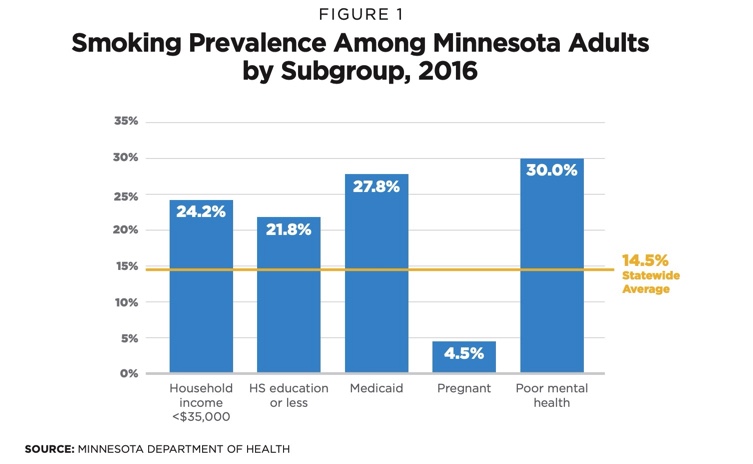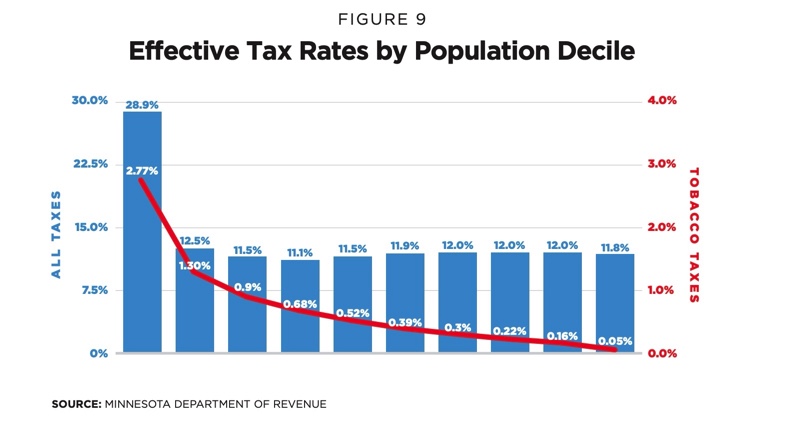Study: Tobacco taxes are mainly paid for by older, less educated, and poor households
Tobacco taxes are becoming more and more popular as a way to curb smoking and tobacco use. In Minnesota, to be specific, numerous proposals have been brought up this year to raise taxes on cigarettes and other tobacco products in order to discourage tobacco use. The St. Paul city council will tomorrow be voting on an ordinance that puts a price floor of $10 on a pack of cigarettes. This, while not identical to a tax achieves the same result as a tax –– i.e., keeps the price high.
Research, of course, has little support for the idea that these taxes change behavior significantly. Regular and long-term smoking, as American Experiment research has shown, is much more common among individuals who have socio-economic issues and thereby less likely to respond to prices. Minnesotans with poor mental health, for example, have twice the smoking rate as the average Minnesotan.

While ineffective, tobacco taxes are, however, regressive and mostly hurt the poor. This is because the poor have higher smoking rates and use tobacco with higher intensity compared to higher-income individuals. Poor smokers are also, on average, less likely to quit smoking due to tax hikes than higher-income smokers.
A new study published by the National Bureau of Economic Research adds to the growing list of evidence showing that the poor are mainly hurt by taxes that aim to curb harmful behavior like smoking.
According to the new working paper, purchases for sin goods –– like cigarettes, alcohol, unhealthy sweetened beverages –– are generally concentrated among a few households, and these households end up paying a majority of the taxes associated with these sin goods. And unfortunately, these households tend to be older, poor, and less educated compared to the rest of the population.
The researchers, for example, estimate that only 10 percent of households pay more than 80 percent of the taxes collected on alcohol and cigarettes. Cigarettes purchases are even more concentrated with only 8 percent of households making purchases.
End result? since poor individuals tend to smoke cigarettes at higher rates, “those earning below $25,000 per year pay roughly three times as much in cigarette taxes as households earning over $100,000 per year.”
This is in line with our previous research showing that low-income tobacco users in Minnesota pay significantly higher taxes on tobacco products compared to high-income users. To be specific, our report showed that in 2018 while 10 percent of Minnesotans with the highest household income paid an effective tobacco tax rate of 0.05 percent, 10 percent with the lowest household incomes paid a tax rate of 2.77 percent.

Lawmakers beware
Certainly, lawmakers need to seriously take into consideration the fact that tobacco taxes are not only borne by a few individuals but also that those individuals tend to be poor, less educated, and older. The same should apply to any policies seeking to raise prices on tobacco products, like the ordinance currently being considered in St. Paul.